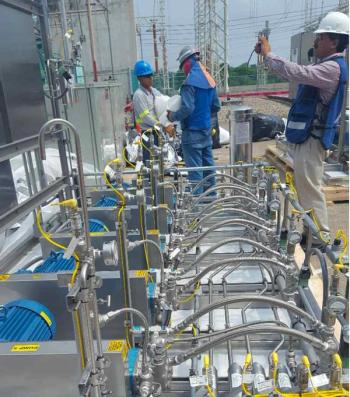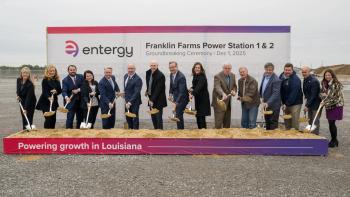
Siemens Energy electrolyzers
Siemens Energy will locate the industrial production of electrolysis modules in Berlin, combining it with the production of gas turbines. Start of production at the location Huttenstrasse in Berlin’s Moabit locality is scheduled for 2023. At this site the complete infrastructure of an existing production hall can be used. New production lines for the electrolyzers are being set up on 2,000 square meters. Today, the site mainly manufactures gas turbines that can be operated with up to 50 percent hydrogen, and by 2030 complete hydrogen operation should be possible.
Siemens Energy is now pooling its expertise in both these areas in Berlin. This also includes the business field of energy transmission: At the Siemens Energy Switchgear Plant Berlin high voltage products are manufactured.
Christian Bruch, President and CEO of Siemens Energy, comments: “For us, hydrogen is an important component of the future energy world. For this to be economically viable, the manufacturing costs for electrolyzers must be significantly reduced. With our new production facility, we are helping to make hydrogen competitive sooner.”
At the Berlin location, the individual electrolyzer cells will be manufactured and combined to form functional modules, or stacks. Depending on the required capacity, these will then be assembled into larger process-based units. In Germany, this last stage will take place at Mülheim, which is closely associated with the new Berlin plant and complements it. The critical element is that production is being switched over to mass production.
Siemens Energy is relying on PEM (Proton Exchange Membrane) electrolysis, in which water is separated into hydrogen and oxygen using a proton-permeable membrane and electricity from renewable sources. The key aspects of this process are its efficiency, product gas quality, and reliable operation with no chemicals or impurities. The latest and most powerful PEM electrolyzer product line from Siemens Energy is optimized for applications up to the high hundreds of megawatts, enabling systems of this size to generate several metric tons of green hydrogen every hour.
Newsletter
Power your knowledge with the latest in turbine technology, engineering advances, and energy solutions—subscribe to Turbomachinery International today.





